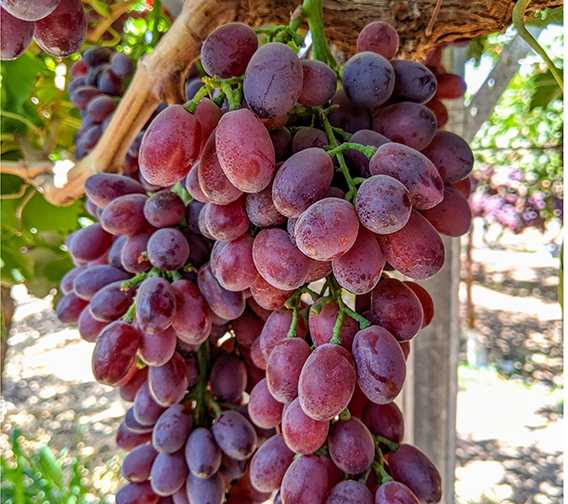Blueberry Growers Unite To Fight for Fair Trade
Last year will be remembered for the coronavirus, but it also will be remembered as a year that Florida specialty crop growers turned up the volume on complaints about produce imports into the U.S. on top of their market windows. Those imports, mostly from Mexico and more recently Peru, have plagued growers since the days of NAFTA (North American Free Trade Agreement). With the newly minted USMCA (United States-Mexico-Canada Agreement) offering no new trade protections, growers resolved to pursue other avenues to protect their markets.
Florida blueberry growers have increasingly felt the squeeze of Mexican imports in their market window. Growers from Florida and Georgia worked with their respective congressional delegations to request that the USTR’s (U.S. Trade Representative) office investigate if and how the imports were damaging the market. Early last year, the trade representative lead Robert Lighthizer called for hearings and testimony on the matter.
Investigation Underway
In September 2019, the USTR requested that the International Trade Commission (ITC) initiate a Section 201 Global Safeguard investigation to study the extent to which blueberry imports were harming the market and U.S. growers. If the investigation finds harm has been done, it opens the door for presidential action.
Blueberry growers in Florida, Georgia, Michigan, and California have acted to keep focus on the issue. In December, the formation of the American Blueberry Growers Alliance (ABGA) was announced. The coalition’s focus will be on trade issues and the damage caused by imports. Its first priority will be supporting the ITC Section 201 investigation as it continues.
ABGA representatives note they have stats to back up their case. Blueberry imports rose by more than 60% between 2015 and 2019. Imports from Peru and Mexico have increased by 1,258% and 268%, respectively, during that same period, driving blueberry prices down by double digits. This has had a devastating impact on the domestic blueberry industry.
The Alliance recently received support from a coalition of 32 members of the U.S. House of Representatives. In a letter to the ITC, the congressional members said:
“The significant surge of imports of blueberries in recent years, the timing of such imports during U.S. harvest periods, the extremely low pricing of the imports, and the targeting of the U.S. blueberry market by foreign exporters has had a devastating impact on the blueberry industry. … As the Commission develops the evidentiary record in this case, it will be clear that imports are a substantial cause of serious injury to farmers. We urge the Commission to promptly make an affirmative determination in this regard.”
The ITC plans to hold hearings in early 2021 and then deliver a report on blueberry injury and remedies to the White House. To support this investigation, Alliance members are providing data and evidence on how blueberry imports are impacting their production, pricing, and marketing activities, especially during the critical U.S. spring and summer harvesting seasons.

Brittany Lee, a Waldo, FL-based grower who serves as the Executive Director of the Florida Blueberry Growers Association, testified along with other industry stakeholders in virtual hearings last month on the impact of foreign imports. She also serves on the board of the newly formed American Blueberry Growers alliance.
Photo by Frank Giles
Under Section 201, the president then determines what action to take. Those actions could include tariffs, quantitative restrictions, or marketing agreements.
“Many family farms have become a casualty of rising imports and are being forced out of commercial production as other countries increase production to deliberately target the U.S. market,” says Brittany Lee, Executive Director of the Florida Blueberry Growers Association. “If something is not done, we will lose the blueberry industry in the U.S.”
Lee, who also is an ABGA board member, adds it is unprecedented that a perishable commodity like blueberries was able to secure a Section 201 investigation. They are rare in general with the last being held 20 years ago involving steel.
If the investigation stays on schedule and recommends that the administration take action to protect domestic growers, it likely won’t be in time for Florida’s season, but it could help some later markets. Lee says the change in presidents should not have an impact because the ITC is a nonpartisan group.
“The Alliance will not go away after the Section 201 investigation,” Lee says. “There will be other domestic interests. It is long overdue, that our growers have representation on these issues. That is what the Alliance was established to do.”
Section 201 Timeline
Hearings and presentations of evidence are well underway. The International Trade Commission’s investigative process occurs in two phases – determining injury and remedies. In the injury phase, the focus is on whether domestic growers are being seriously injured or threatened with serious injury and, if so, whether an increase in imports are a “substantial cause” of that injury.
In the remedy phase, the ITC recommends actions to address the serious injury, which can include import duties, a tariff-rate quota on the product, a quantitative restriction on imports, or any combination of these actions. Section 201 does not require a determination of unfair trade practices. During each phase, the ITC holds hearings, solicits public comments, and publishes its findings in the Federal Register.
The ITC reports its findings to the president within 180 days of a filed petition. The president has 60 days to decide which, if any, of the ITC’s recommendations to implement, taking into consideration the impact on domestic industry, the probable effectiveness of proposed actions, the potential impact on consumers, and the broader U.S. national economic and security interests.
The ITC report on injury was slated for early February. By mid-February, ITC commissioners are expected to vote on injury. If they vote that indeed injury has occurred, a hearing will then be held on the appropriate remedies the U.S. administration should take.
By mid-March, a final report recommending remedies will be supplied to ITC commissioners. March 19 has been set as the approximate date for commissioners to vote on remedies. From there, the recommended remedies will be turned over to the president for consideration and action.
Other Crops Get in on the Trade Action
Blueberry is not the only crop sector to feel the pinch of foreign competition. In November 2020, the U.S. Trade Representative asked for the same Section 201 Global Safeguard investigation into strawberry and bell pepper. The investigation will look at imports of fresh or chilled product of both crops, mainly from Mexico.
In 2019, the U.S. imported $871 million of fresh strawberries, of which 99% came from Mexico according to dates from the International Trade Center. That same year, the U.S. imported $1.8 billion in bell peppers. Seventy-two percent came from Mexico.

Some consumers have taken to social media to inform retailers of the proximity of Fresh From Florida produce in their own backyards. Here’s one example captured on Facebook.
Florida tomato growers have long suffered from the impact of Mexican imports. This has led to a number trade disputes and agreements over the years. Most of those came in the form of suspension agreements to halt antidumping investigations that were being conducted by the U.S. Department of Commerce. In 2019, the U.S. and Mexico entered into its fifth such agreement in the past 24 years.
“After two years of negotiations and the resumption of the antidumping investigation in May 2019, a new suspension agreement was signed on September 19, 2019,” says Michael Schadler, Executive Vice President of the Florida Tomato Exchange. “The new agreement includes strong monitoring, enforcement, and anti-circumvention pro-visions, including border inspections, that should help eliminate the injury to American tomato farmers caused by dumped Mexican tomatoes. The border inspections have begun and have gone pretty smoothly. It only covers about 66% of imported Mexican tomatoes, but this important provision should discourage dumping of low-quality and defective tomatoes, which have been depressing prices and injuring U.S. tomato producers for years.”
Over the last 15 years, U.S. tomato production declined by 34% — from 4.4 billion pounds to 2.9 billion pounds. During that same period, Mexican tomato imports to the U.S. skyrocketed 125% — from 1.6 billion pounds to 3.6 billion pounds.










